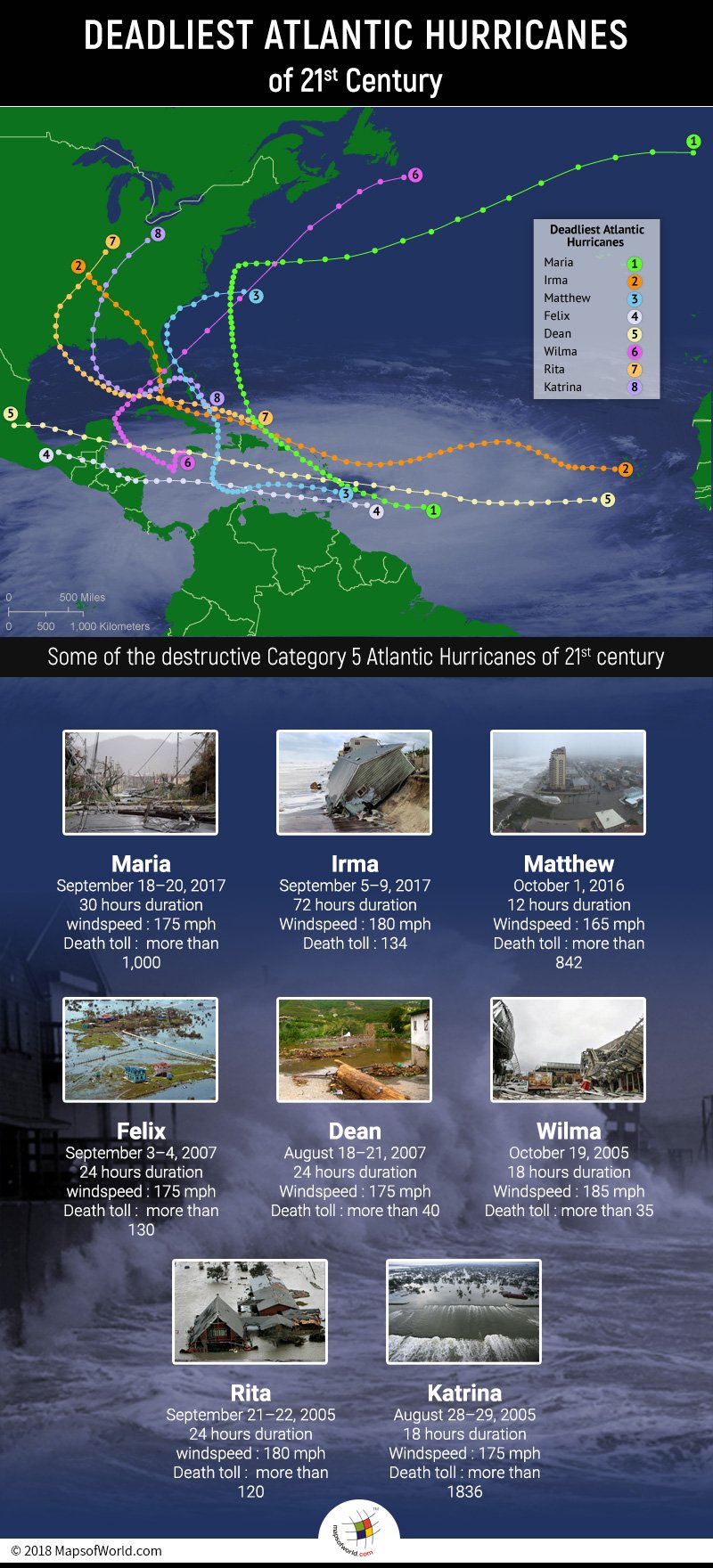

It hasn’t been that long since storms have ravaged some of the states in America. Puerto Rico had faced massive destruction owing to the Hurricane Maria that had struck the island last year. An estimated 3,000 people lost their lives in 2017. It also led to the longest blackout ever in history of USA.
Hurricanes are large and severe tropical storms that form over the warm waters of the North Atlantic Ocean, particularly in the Caribbean Sea and the Gulf of Mexico. Not only do they have high wind speeds, but heavy rains, lightning, and thunderstorms are also often accompanied. They have the potential to do intense damage. Meteorological department often predicts the category, raising awareness and announcing evacuations as and when needed. Saffir–Simpson hurricane scale (SSHS), classifies hurricanes into 5 categories. While Category 1 is a tropical cyclone have winds at a speed of 74 mph, Category 5 is considered to be utterly dangerous as the storms sustain winds exceeding 156 mph.
Here is the list of some of the destructive Category 5 Atlantic Hurricanes of 21st century:
Maria
September 18–20, 2017
Hurricane Maria is regarded as the deadliest natural disaster to have affected Dominica and Puerto Rico. It turned into a hurricane of Category 5 on reaching the island of Dominica and northeastern Caribbean, it sustained windspeed of 175 mph and pressure of 908 hPa, leading to numerous fatalities in the region. The hurricane lasted for 30 hours and Lesser Antilles, Virgin Islands, Puerto Rico, Dominican Republic, Turks and Caicos Islands, were all throttled by it.
Irma
September 5–9, 2017
Hurricane Irma was the most intense and longest lasting hurricane ever recorded in history. Its peak intensity lasted over 72 hours, devastating the continental United States. After originating as a tropical wave, Irma continued to intensify and turned into a category 5 hurricane by September 6, 2018. The wind-speed peeked up to 180 mph with the minimum pressure of 914hPa. It cost the lives of at least 134 people, with maximum fatalities in British Virgin Islands, Florida and Cuba.
Matthew
October 1, 2016
Hurricane Matthew cause a humanitarian crisis in Haiti, causing extensive devastation in Greater Antilles and the islands of Bahamas. Even though it had a short duration of 12 hours, its intensity had increased dramatically on the October 1, 2016, also referred as ‘explosive intensification’. The wind-speed increased up to 165 mph, leading to death toll above 842 as per reports released by Telegraph during those days.
Felix
September 3–4, 2007
With the peak intensity lasting for over 24 hours, Felix hurricane was upgraded to Category 5 on September 3, 2007 when it struck near the border between Nicaragua and Honduras. It sustained a speed of 175 mph and pressure of 929 hPa. There was catastrophic damage in the regions and more than 130 people were reportedly killed. Earlier, the storms had also hit Barbados and Saint Vincent on September 1, and produced strong rainfalls around the Windward Islands.
Dean
August 18–21, 2007
The path of Hurricane Dean was from the eastern Atlantic Ocean, passing through the Saint Lucia Channel, towards the Caribbean. It emerged as a Category 5 hurricane just before reaching the south of Jamaica, and making its landfall on the Yucatán Peninsula on August 21. Sustaining windspeed of 175mph and pressure of 905 hPa, Dean caused havoc in the Caribbean islands and Central America within 24 hours. More than 40 people were reportedly dead.
Wilma
October 19, 2005
Wilma was formed after a significant tropical depression that was formed in the Caribbean Sea, near the islands of Jamaica. It also underwent explosive intensification on October 19, 2005 sustaining a windspeed of 185 mph. With minimum pressure of 882 hPa, the peak intensity lasted for 18 hours and had most destructive effects on the Yucatán Peninsula of Mexico, Cuba, and the U.S. state of Florida. Over 35 people were declared dead by some of the reports.
Rita
September 21–22, 2005
Hurricane Rita was one of the most intense tropical cyclones ever observed in the Gulf of Mexico. Homes and apartments had sustained significant damage because of its threatening windspeed of 180 mph. It took lives of over more than 120 people living across the region of Cuba and United States Golf Coast. Electric services were disrupted in numerous regions of Texas and Louisiana for several weeks.
Katrina
August 28–29, 2005
Hurricane Katrina resulted in catastrophic damage from central Florida to eastern Texas, and whole of the USA was shook. It had accompanied a rainfall which totaled 5 inches in some regions. Properties were damaged, as water from the beach flooded the inland areas. Fatal engineering flaws in the flood prevention system came out in the open, when excessive flooding devastated the areas. Minimum of least 1,836 direct fatalities were observed.
There is an ongoing debate whether ‘Category 6’ hurricanes will be witnessed by the world in near future. That is, the wind speed generated by those storms would be 200mph, and of course they will be even more severe threat to mankind. No doubt, hurricanes have the tendency to be wetter, but the idea of them being stronger than ever is still in speculations, and haunting the world.
Know more:
Related maps:
The Republic of Madagascar is an island country located in the Indian Ocean, off the…
The Euro is the official currency of the European Union. It is, however, not incumbent…
There are many countries or regions that are partially recognized by the UN, have disputes…
The Alaska Statehood Act was signed into law by President Dwight D. Eisenhower in 1958,…
The name Persia may, however, only be used to refer to Iran in some contexts.…
Hawaii is an Island State in the US. It is one of the 50 states…